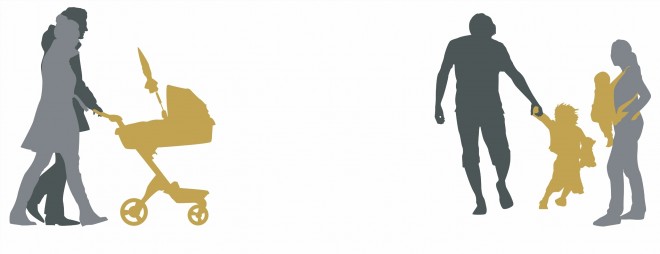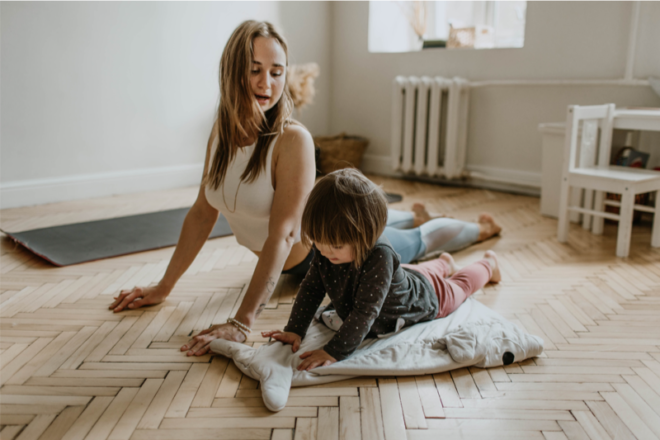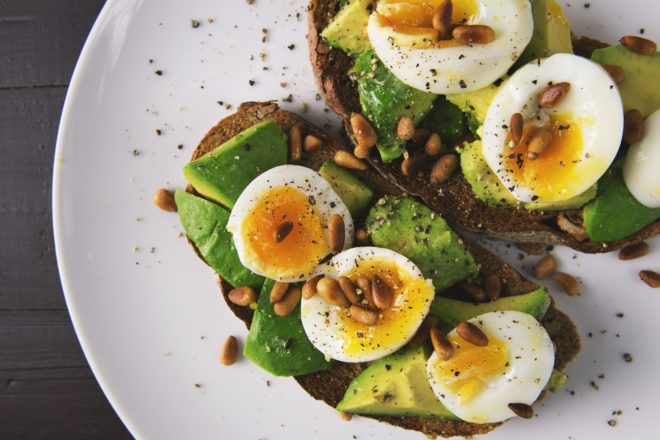
Clinic News
Welcome to Autumn ... we are debating putting the heating on in the clinic. Time to get out those warmer clothes. We hope you've had a good summer despite the weather and managed to spend some time with your friends and family.
We are in a position to offer a part-time receptionist position within our team. Our lovely receptionist Jill has decided to retire after 15 years of working at the clinic. She has been a very popular member of the team as well as with patients. Her 'job done' efficiency will be a hard act to follow. If you know someone who would be interested in applying for the position and would like more details please email alex@beestonchiropractic.co.uk
Andrea has made a sterling start, we are so very grateful that she has joined the team. She is away on holiday until 14th September so Alex and Troy will be looking after her patients. Troy will also be away from the clinic next week until Saturday 11th September. This means appointment slots will be in high demand. Please please please take care not to waste them by missing your appointment. Please lets us know in advance as we have a growing waiting list of patients in need.
This month we will focus on the physical stresses of being a parent and a supportive grandparent. Whether the new addition to the family is only a few months old, a toddler, or an active teenager; we often see carers who have back pain after being with the youngsters. On the flip side of that when you are handing your new baby there are things that you need to be aware of to help support their posture too - read on to find out more.

Healthy Postural Positions for Babies
Birth is one of the most traumatic experiences a baby can go through. It is not often known, for example, that the baby’s cranial bones move and overlap affording the flexibility required during delivery. Even after a successful delivery, a baby’s spine is still at risk.
However, there are some precautions you can take as a parent to minimize this risk both to your baby and to yourselves. Here are the healthiest positions for you to care for your baby.
Holding baby: your baby should be held close to you with the back of your baby’s head supported with your index finger behind the ear.
Bathing baby: your baby’s head should be supported using your thumb and forefinger while your free hand is used for bathing and supporting your baby in the tub.
Parent/child interaction: throwing your child up and down can actually cause spinal problems due to a lack of support as your child is being bent forward and backwards.
Picking children up: when lifting your child, you should be on your haunches, lift your child while holding them under both arms, and avoid carrying them on one hip. Preferably, your child should be carried in front of you with one leg either side of you.
Papoose type slings and carriers: unfortunately contraptions that allow your child to sit before it is naturally able to can cause major spinal problems. Most of the holding devices keep your baby’s spine in the ‘c’ shape curve it’s born with and do not allow the normal curves in the neck and low back to develop.
Dressing the child: clothing that has a tight collar can put a strain on your child’s spine in the neck and the area between the shoulder blades. Buttons and zips should be used as much as possible.
Feeding: if breast feeding, you should hold the baby at the level of the breast whilst supporting your arm on a pillow, to reduce spinal problems in yourself. You should place the baby so that it faces your breast so that rotation of your baby’s neck is minimized.
Crawling: crawling should be actively encouraged, as a lack of sufficient crawling is responsible for weak spinal architecture.
Emotional stress can also affect your baby. Domestic disharmony and maternal distress is very quickly picked up by the infant and translated into irritability, crying and unsettled behaviour. The negative effect on muscle tone, sleeping and feeding patterns is a major contributor to spinal subluxations.
As parents, bonding should be encouraged immediately for you both. Holding the infant close to your body, maintaining sustained eye contact, smiling and making soothing sounds are all important.

Prevent the Pain in Parenthood
One of the most likely times women will get back pain is during pregnancy and for men and women it is when there is an infant in the house needing to be picked up and carried. Both these times are paradoxically when you would like your back to be functioning at it’s best.
Caring for an infant puts stress on your back. Initially, you may be lifting the 7 to 10 pound baby up to 20-30 times a day. By the time the child is a year old, you are lifting and carrying around 17 pounds. Two years later, you will be lifting a 25 to 30 pound child.
Here are some ways that new mothers, fathers and grandparents can help reduce their risk of injury and back pain.
Safe lifting, the basics: Stand with your feet at least a foot apart, this will give you a stable base of support. Keep your back as straight as possible and bend your knees. Do not stretch your arms out straight to pick up the baby. Bring the baby close to your chest before lifting.
Lift using both arms and your thigh muscles, which are amongst the largest and strongest muscles in the body. To pick up a child from the floor, bend at your knees-not at your waist. Squat down, tighten your stomach muscles and lift with your legs. When carrying and moving a child, pivot with your feet until you are facing your destination then lower the child into the crib or onto the floor by bending at the knees, with a straight back.
Carrying: Hold your child in an upright position, directly against your chest. Carrying a child on one hip creates postural imbalances that can lead to low back pain over time. Consider using a ‘front pack’ to carry the baby when you are walking.
Exercise for women: Begin exercising again soon after delivery to restore muscle tone to the abdominal and back muscles. While the baby is napping, take 10 minutes to do stretching exercises on the floor each day. This will help restore hip and back flexibility. Try to return to your normal weight within six weeks after giving birth. If you had a Caesarean-section (C-section) delivery, wait six weeks or until you get the permission of your obstetrician before you begin exercising.
Breastfeeding: To avoid upper back pain from breastfeeding, bring the baby to your breast, rather than bending over the baby. While you are nursing, sit in an upright chair rather than a soft couch.

Take Steps Towards a Better Posture
A 3-minute programme designed to improve your, and your loved ones’, postures
Chiropractors are often asked: what does the ‘ideal posture’ look like? According to The British Chiropractic Association (BCA) there is no such thing as a ‘perfect posture’. The reality is that everyone is different and each person will assume a posture that feels comfortable for him or her to sit, stand and sleep. The general advice given to preoccupied parents or stressed adults is the same: stretch, exercise, vary the type of postures throughout the day, and avoid sitting for too long in one position.
The BCA formulated an at home, three-minute posture care programme called ‘Straighten Up UK’ which is designed to improve kids and adults’ posture and spinal health.
The programme is divided in three simple stages, with each stage proposing three exercises. The basic rules are simple: always stand tall, think positively, breathe calmly and move smoothly. Here are three posture exercises from the programme that will help you and your loved ones feel and look great.
Step One: Stand Tall and Be A Star
- Straighten up your posture, maintaining shoulders, hips and knees in a straight line;
- Become a star by spreading arms and legs;
- Facing forward, place one hand in the air, breathe and slowly stretch one arm overhead while bending the spine to the opposite side;
- Repeat twice for each arm.

Step Two: Roll and Relax
- Standing tall let the head hang forward and gently move from one side to the other;
- Massage the base of the neck with your fingers while rotating the head for 15 seconds on each side;
- Finally relax the shoulders by moving them back and forward.
Final Step: Core Balance and Letting Loose
- Standing tall take a step forward lending in a lunge position;
- Balance this position for 20 seconds and then repeat on the opposite side;
- Finally shake it all off, by letting your limbs loose.
These exercises are designed for healthy kids and adults. If you experience persistent pain or any discomfort in the spine, consult your chiropractor.

Staying Healthy, Safe and Fit During These Autumn Months
With darker mornings and cooler weather, finding the motivation to stay healthy and fit can be difficult. And that can lay the foundation for a weakened immune system, posing a greater risk of developing illness or injury.
Here are some easy tips on exercise, diet, health and wellness that you can follow during the cold season.
Start a Keto diet
The ketogenic diet (or keto diet, for short) is a low-carb, high-fat diet that offers many health benefits. In fact, over 20 studies show that this type of diet can help you lose weight and improve your health. It involves drastically reducing carbohydrate intake and replacing it with fat. This reduction in carbs puts your body into a metabolic state called ketosis.
When this happens, your body becomes incredibly efficient at burning fat for energy. It also turns fat into ketones in the liver, which can supply energy for the brain. Ketogenic diets can cause massive reductions in blood sugar and insulin levels. This, along with the increased ketones, has numerous health benefits. Ketogenic diets may even have benefits against diabetes, cancer, epilepsy and Alzheimer’s disease.
Add Omega 3 fatty acids
Omega 3 fatty acids are a healthy type of fat that are naturally found in many food types including fish, plant seeds and nuts. Omega 3 fatty acids are great for reducing joint pain and stiffness as they are a natural anti-inflammatory”. Studies have also shown that omega 3 fatty acids help lower levels of depression, which people commonly feel during the shorter, darker days of winter.
Cook with Spices and Spice Related Foods
Onions, garlic, ginger and turmeric are the perfect items to add flavour to your dishes. Not only do they make food taste great, but they’re also shown to help improve immune function. Fresh garlic, ginger and onions are more than flavouring. Using all three together has a synergistic effect on lowering cholesterol and blood pressure. Turmeric is a spice traditionally used in Chinese and Indian medicine. This spice helps to combat a number of conditions including inflammation and heart disease, and it also acts as a powerful antioxidant.
Plan your Workouts
If you don’t feel in the mood for fitness, you can do exercises at home. There are plenty of resources online that supply workout videos and exercises. These resources offer a variety of workouts including yoga, strength training, aerobics and other body-weight exercises. But try to stick to a weekly exercise plan so you don’t put off your regular exercise activities. On Sunday night, write down your exercise schedule for the next seven days. Choose your exact workout routines, activities or exercises for each day and how long they will be. Knowing what you’re scheduled to do each day ahead of time makes it easier to stick to.
Head to a Steam Room or a Sauna
If you begin to feel yourself experiencing depression or higher levels of stress after the holiday season, steam rooms and saunas can help. They help tense muscles to relax, which can alleviate feelings of stress. The high temperatures also get you working up a sweat, which is a great way to detoxify your body and your skin.
Frequent Hand Washing and Vitamin C
Frequent hand washing throughout the day and consuming lots of vitamin C are an absolute must in maintaining your health during the winter.
Not only do they help protect your immune system and prevent you from developing flu and colds, but they also protect others around you.
We treat all conditions that affect any muscle or joint in your body, from your head to your little toe! One of the most common complaints that we treat is back pain and Chiropractic is recommended by the government authority, the National Institute for Clinical Excellence (NICE) for acute and chronic back pain. Some of the other conditions that we treat are neck and headache, shoulder pain, leg and hip pain, knee and foot pain, sciatica and arthritis. Our registered Chiropractors all have at least five years of training. Treatment costs can be covered through most health insurers. If you are in any doubt, we are always very happy to talk with you on the phone to see if your condition will respond well to Chiropractic treatment. Call the clinic now to arrange an appointment time that works for you. 0115 9225085 If you would like to opt-out of receiving these newsletters please follow the unsubscribe link below, email alex@beestonchiropractic.co.uk or let us know at your next appointment.







